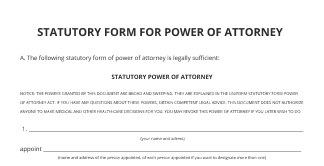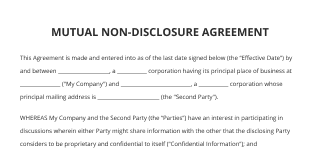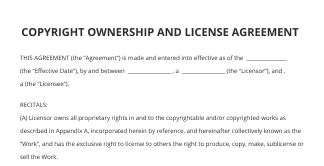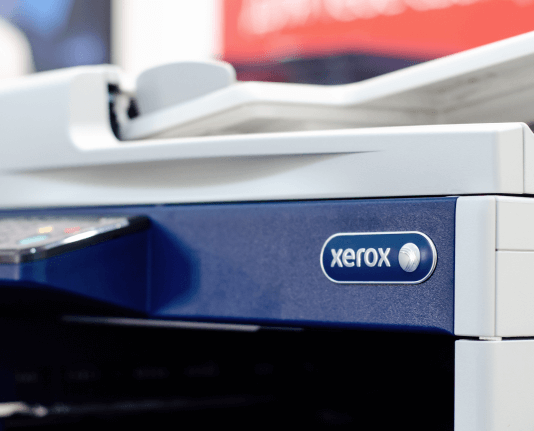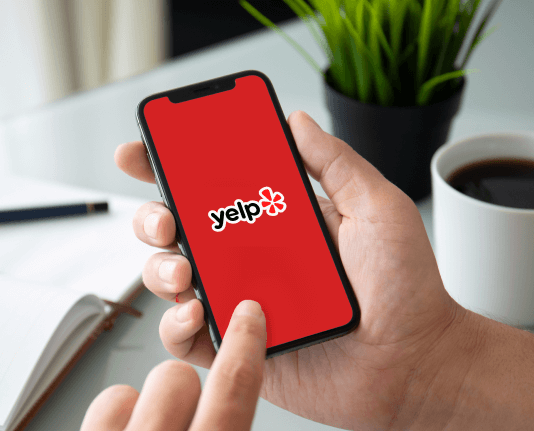Descubre Software De Código Abierto Para La Gestión De RFP Para Pequeñas Empresas
Impulsa tu negocio con la solución de firma electrónica de airSlate SignNow
Agrega tu firma legalmente vinculante
Integra mediante API
Envía documentos condicionales
Comparte documentos mediante un enlace de invitación
Ahorra tiempo con plantillas reutilizables
Mejora la colaboración en equipo
Vea las firmas electrónicas de airSlate SignNow en acción
Soluciones de airSlate SignNow para una mayor eficiencia
Las reseñas de nuestros usuarios hablan por sí mismas






Por qué elegir airSlate SignNow
-
Prueba gratuita de 7 días. Elige el plan que necesitas y pruébalo sin riesgos.
-
Precios honestos para planes completos. airSlate SignNow ofrece planes de suscripción sin cargos adicionales ni tarifas ocultas al renovar.
-
Seguridad de nivel empresarial. airSlate SignNow te ayuda a cumplir con los estándares de seguridad globales.

Funciones de airSlate SignNow que los usuarios adoran
¡Obtenga firmas legalmente vinculantes ahora!
Preguntas frecuentes
-
¿Qué es el software de gestión de RFP de código abierto para pequeñas empresas?
El software de gestión de RFP de código abierto para pequeñas empresas es una solución personalizable que permite a las empresas más pequeñas crear, gestionar y evaluar solicitudes de propuestas. Ofrece transparencia y flexibilidad que a menudo carecen los software propietarios, lo que lo hace ideal para empresas con presupuesto limitado que buscan agilizar sus procesos de RFP. -
¿Cómo puede beneficiar el software de gestión de RFP de código abierto a las pequeñas empresas?
El uso de software de gestión de RFP de código abierto para pequeñas empresas ayuda a agilizar los flujos de trabajo y mejorar la colaboración entre los miembros del equipo. Reduce significativamente el costo asociado con la compra de licencias de software propietario y ofrece opciones de personalización adaptadas a las necesidades específicas del negocio. -
¿Es rentable el software de gestión de RFP de código abierto?
Sí, el software de gestión de RFP de código abierto para pequeñas empresas suele ser más rentable que sus contrapartes propietarias. Dado que es gratuito para usar y modificar, las empresas pueden asignar sus recursos a otras áreas mientras mantienen procesos de RFP de alta calidad. -
¿Qué características debo buscar en el software de gestión de RFP de código abierto para pequeñas empresas?
Las características clave a buscar incluyen gestión de documentos, herramientas de colaboración, plantillas personalizables y sistemas de puntuación de evaluación en el software de gestión de RFP de código abierto para pequeñas empresas. Estas funciones mejoran la eficiencia, permitiendo que los equipos trabajen sin problemas y revisen las propuestas de manera efectiva. -
¿Puede el software de gestión de RFP de código abierto integrarse con mis herramientas existentes?
Muchos softwares de gestión de RFP de código abierto para pequeñas empresas ofrecen APIs o integraciones incorporadas con herramientas empresariales populares. Esto asegura que tu equipo pueda mantener un flujo de trabajo cohesivo conectándose con plataformas existentes de gestión de proyectos, CRM o colaboración de documentos. -
¿Qué tan seguro es el software de gestión de RFP de código abierto para pequeñas empresas?
El software de gestión de RFP de código abierto para pequeñas empresas puede ofrecer medidas de seguridad robustas, pero su efectividad depende de qué tan bien se mantenga y configure el software. Las empresas deben asegurarse de seguir las mejores prácticas de seguridad, como actualizaciones regulares y confiar en una comunidad de soporte confiable. -
¿Qué tan fácil es configurar el software de gestión de RFP de código abierto?
Configurar el software de gestión de RFP de código abierto para pequeñas empresas varía en dificultad, pero la mayoría de las plataformas buscan ser fáciles de usar. Con documentación completa y una comunidad de soporte activa, muchos usuarios pueden implementar el software con éxito sin conocimientos técnicos avanzados. -
¿Qué opciones de soporte están disponibles para el software de gestión de RFP de código abierto?
El soporte para el software de gestión de RFP de código abierto para pequeñas empresas generalmente proviene de foros comunitarios, documentación en línea o servicios profesionales de pago. Aunque el soporte comunitario suele estar disponible, las empresas pueden optar por capacitación adicional o servicios de consultoría de proveedores experimentados para ayuda personalizada.
Lo que dicen los usuarios activos — open source rfp management software for small businesses
Búsquedas relacionadas con Descubre software de código abierto para la gestión de RFP para pequeñas empresas
Open source rfp management software for small businesses
[Music] hello I'm Peter Levine a 16-0 partner I've been working on open source for many decades and the last 10 years there really has been a renaissance in open source this graph shows the bulk of investments have occurred over the past 10 years there isn't just more open source investment this investment is leading to bigger IPOs and larger M&A transactions it's interesting to note here that my sequel which was acquired by Sun Microsystems in 2008 for a billion dollars I was there at the time and I remember thinking this is the highest valuation for any open source company from now to eternity full-stop but look what happened over the past couple of years cloud era Mule soft elastic github all multi billion-dollar M&A events or IPOs and really to punctuate the sort of two ends of this particular graph if you look at Red Hat in 1999 Red Hat went public for 3.6 billion dollars and last year was acquired by IBM for thirty four billion dollars open source really started largely as software for enterprise infrastructure such as databases operating systems today open source is being developed in almost every industry from FinTech to e-commerce to EdTech to cyber security further indicating that it's a really robust time to be involved in the open source community so what's behind this Renaissance sources move from fringe to epicenter because of what I call a virtuous cycle of technological and business innovation on the technical side open-source was and is the best way to create software because it speeds product feedback it drives adoption it improves reliability all these great technical characteristics really became a core framework but as important as this technical innovation that's occurred with an open source the commercial innovation is just as important and I would argue without business innovation such as pay for support open core and of course SAS open source as a service there really wouldn't be an open source Renaissance economic interests create the virtuous cycle or flywheel more business innovation leads to larger communities spur more tech innovation and increases incentives for open source I would expect this innovation to continue and I'll touch on my views on what I call open source 3d at the end of the presentation open-source is built on three pillars they are one project community fit to product market fit and three value market fit each of these have measurable objectives and these pillars sort of unfold over time so project community fit is really about getting early critical community mass indicators here are things like github stars a number of collaborators the number of poll requests an open source can start from many different places it can start from inside large organizations it can start from academia it can start from the brainchild of some great entrepreneur sitting and thinking about what comes next but what's most important is that open source has a project leader to drive the effort and typically that project leader becomes the CEO of companies along those lines as investors we are strongly biased towards funding project leaders since they own the project they know the product roadmap and can lead the product roadmap and know the code base inside note the next is product market fit and this is all about organic adoption as measured by the number of downloads the interesting thing about product market fit is that this is the precursor to later stage sales engagement that these early open-source users ideally will become top of funnel leads for value-added product and services and you can think about these early users as being an extension of your organization they actually help to promote through organic word-of-mouth the popularity of your project into the community while working on product market fit it's important to think about what will delineate your commercial product so start thinking how you will deliver value to someone that wants to pay for it and that gets us into the third pillar value market fit ultimately to build a commercial open source company finding value market fit is critical while product market fit often accrues to individual users value market fit typically centers on departmental and enterprise buyers and is measured by revenue I've noted here some of the value add features that enterprises often find interesting now one pitfall to avoid or be aware of is sometimes open source can be too good that is the project and product market fit is fully complete such that the free product may not need any paid for component here are value market fit business models the first is support and services this is where you give away software and charge for support Red Hat is the example and I would say that the downside or potential area to be aware of is this model is very hard to scale it hard to scale operationally and you know if you go down the path where this is your model there's a likelihood that Red Hat may actually become your competitor because they really have nailed the scaling challenges that's what they do Red Hat has built an entire organization phenomenal organization on being able to support and service open-source users the next model is the open core model this is where you have differentiated licensing around a core open source this is great for on-prem software the thing to be careful of here is alienation with open source versus proprietary and there's always going to be a tension there like what do you put in open source and what do you have proprietary and how those things interlock with one another and then finally in the SAS model this is open source as a service it's a complete hosted offering cloud computing really unlock the full potential of open source the hosted service allows open source to have full strategic value to the customer when a hosted service is based on open source or based on proprietary code the user does not distinguish between the two and so all the benefits that accrue to open source can be done with the full strategic value of that open source being delivered to the user and I'd say the challenge here might be that you arouse big clouds into doing the same once you hit a certain maturity public clouds and licensing will come up licensing is a heavily debated topic and while it's important I see a lot of companies spending too much energy in the early days on licensing I think it's way more important to understand your competitive advantage and use licensing as part of a go to market strategy and not put licensing up front and then figure out what your go-to-market and competitive advantage should be following the licensing model furthermore I think we've over rotated on our concerns about the cloud and one of the questions that we've asked our team here at Andreessen Horowitz can you name a single example of a company that's been fully displaced by a cloud provider and the answer is no and so I think that our concerns around large cloud vendors coming in and just co-opting an open source project and putting you out of business the concern is probably greater than reality in many cases open source companies have become great partners of cloud companies and approaching it that way will also help to minimize and mitigate the concern about clouds taking over there's a couple of things that I would remind you all of with respect to your competitive advantage that you have when it comes to your offering versus public cloud one Enterprise customers don't want vendor lock-in two they want to buy from people who have written the code and three big companies don't have your specific expertise they have a lot of expertise in a lot of things but in general not specific around your particular project and again this comes back to the project leader if the project leader is involved with the roadmap and the project and you've written the code with a group of people in your company no one can do a better job with that code and that expertise than the organization who's built it when I was at Zen source we had all the people who built the project and knew the code and all that and then there was another company who basically used the open source that we were creating to offer a very similar product and every time we'd go into a customer to the extent that they knew about our competitor they'd ask us like well your competitor says they offer the same thing what's the difference and we would say to the customer at the buyer were the folks who wrote the code we're able to better support you to lead the roadmap put new features in and that shut down the discussion right there they're like yep we get it that's super important so the same thing today if you think about the cloud vendors in that it's a very tangible competitive advantage on the knowledge of the code your ability to go add features and the ecosystem really built around the founding people who start the project on the licensing side a little more detail on this research shows that the most projects are using permissive licenses like MIT and Apache it allows a project to be inclusive and encourage his contribution for early startup founders as I've mentioned my recommendation is to not stress too much about determining which license to use know your options focus on the product and community and engage legal experts to help you get the right option most importantly just to reiterate the point figure out your go-to-market who your customer is kind of how you want to go deploy the software what markets you're actually going after and then fit a licensing model into that distribution strategy now that we've understood the three pillars of open source let's look at how to build your organization around them as I mentioned I think of open source as a developer driven top of funnel exercise and one of the things here it's not about the funnel the next section here is really about building specific open source related functions into your organization and how those functions result in a funnel going from awareness and interest all the way down to revenue building a business is about connecting that open source funnel to a strong value driven commercial product so let's look at each stage the first is awareness and interest and this is largely about developer and community management it starts with developer evangelism this drives the top of funnel it's paramount here to inspire the community ownership and build a network of technical experts who promote the project via word-of-mouth community management is a key function to communicate road map and set community expectations branding is a next early kind of awareness certainly awareness point and one key question that will come up is should you brand your business with the same name as your open source projects companies have succeeded both ways but it's important to know the pros and cons of each separate names reduce confusion prevents brand dilution and provides licensing flexibility data bricks and spark is an example the same name can help with drafting from project momentum but risks alienating open source project members Zen and Zen source are examples they are of same name and in all these stages of the funnel measurement is really important to understand how to move from one phase to the other but what's important here is to measure user registrations and/or downloads as evidence that the project is actually being used one of the things that we learned I remember this from Zen source is you get what you measure and we originally put in our KPIs we are going to measure downloads but what we learned is about half the downloads never completed and of those half that were completed only about half were ever used by the user and so measuring downloads turned out to be interesting but not sufficient in terms of a metric that could credibly be used to indicate the user traction and what was happening and so at that time we said ok well why don't we build in some form of user registration and combine that with downloads to get a better of what's happening in the funnel next stage consideration is really all about maximizing developer love adoption and value and this is typically accomplished with product management I've come to believe that product management is a critical role in any software organization particularly open source because here's where you balance not only the bridge between engineering and your go-to-market organization but you also manage the bridge between your community and the roadmaps that you produce typically in an open-source company is going to be two roadmaps one for open source for core functionality and one closed source for paid features what I encourage folks to do is to put your open source roadmap in your proprietary roadmap literally on one slide and show the interlock between the two like when open source gets released what do you snap from that and put into your regular product how do those two things work together I'd also suggest having a framework to clearly delineate what will be paid and what will be free for open source CEOs and for those of you who are the project leads managing the roadmaps incorporating customer feedback and communicating about what is open versus closed can take a majority of your time but I think it's very important to really make sure that you as the project lead and CEO are working with your teams to facilitate this particular activity next is communication it's extra important to communicate how you will invest in R&D and what percentage of resources will be invested in open-source versus proprietary applications features or services and then third building a growth function with analytics and telemetry when it comes to the product itself you want it to be easy to access and download with great technical documentation and most importantly built-in analytics to understand how users are using and upgrading the product this helps identify value market fit from product market fit the success measure here should be KPIs about product usage that predict downstream sales opportunities and it can be complex to pinpoint these exact KPIs or really what you want to develop over the course of time at your organization or the conversion metrics at each point of this funnel knowing that if you start with X number of let's say developers or users at the top of the funnel how does that turn into revenue at the bottom in this particular area of analytics and telemetry I would encourage you to experiment with sk use with product bundling unbundling bundling you know kind of go back and forth to find the correct line between free and paid functionality this is really a never-ending journey for an open-source company and the funnel and feedback cycles have to be very tight the next stage stage 3 is about evaluation and intent and here this is largely about outbound marketing and sales development on outbound marketing you want to prioritize campaigns focused on specific market segments let's say you're going after development managers focus the campaign around those users and these can be ascertained based on well-known patterns from developer evangelism and top of funnel inbound but really focus on those particular buyers as opposed to generalized marketing campaigns next sales development really takes a customer success approach to be curious about developer needs and understanding what your users are doing here be inclusive ask questions and don't be overly salesy and then finally leads get filtered from legion based on what org a developer represents and you want to see if the project is tied to the larger enterprise or if the project is around an individual the measure of success here will be sales qualified leads and that gets turned over to the go to market and sales organization for conversion into revenue which is the final phase here purchase an expansion in this particular stage sales may consist of both self-serve and sales serve models self serve is typically a bottoms-up approach and sales serve is a top-down approach I'll show how these elements work together but the coordination of self-serve and sales serve really works to expand the opportunities within a customer two primary activities in your purchase and expansion phase are new logos and then expansion an upsell of existing accounts coordinating top of funnel organic growth and enterprise sales can lead to a few common failure modes one is your open source user doesn't lead to a buyer and this is an example of where product market fit might be really great but there's not value market fit to tie into it so you have a lot of open source users but there's no buyers number two your open source project growth falls behind your enterprise sales the balance between what's in open source and what's in proprietary may be out of whack it may be here where the value market fit overrides the product market fit and at some point you know your organization is seen more as a closed source proprietary company as opposed to an open-source company similar to that your commercial offering kills your developer street-cred this again as an example of where you may just be putting too many features into your proprietary product and almost abandoning your open-source ribs if successful you may start to see a graph like this and this is a graph that we saw at github the x-axis is time and the y-axis is dollars per customer the orange line self serve is really that bottoms up selling to individual users typically when it's self-serve bottoms up there's no formal sales organization that's interacting with a user over time the or product might be more valuable to the department or enterprise as opposed to individuals and that's where these other lines come into play the green one is an example of inside sales which typically will sell to departmental users and the blue line is field sales selling to enterprise users the green and blue lines are examples of top-down selling and again the orange line is bottoms up when these are all layered up and you have the right product for each of these use cases you can start to really grow revenue with a combination of bottoms up and top down selling this graph is an abstract not every company will have this exact representation for example you might not have field sales to the enterprise you might just have let's say inside sales and maybe a self-serve model you really need to tailor this to your organization into the markets that you're selling into so where is open-source headed next 3.0 obviously a slew of headlines in the last three years show that even proprietary technology companies are embracing open-source as an example Airbnb has open source more than 30 projects Google more than 2000 as software eats the world the open source is eating software open source is not just Red Hat elastic data bricks cloudera it's a part of Facebook Airbnb and Google and if we think of open source that way the Renaissance is really only beginning and the market is far bigger than we have yet created or yet realized I like to think that the virtuous cycle of technological and business innovation will continue on the technology side things like artificial intelligence open source data and blockchain are examples on the business innovation side we've had ads supported for a while but things like crypto s and data-driven revenue are ways of monetizing the building of open source projects these are just examples but we can start to imagine that in five or ten years from now these innovations will continue on both sides and as a result of these innovations open source is a key part of every company thank you
Show moreObtén más para open source rfp management software for small businesses
- Crea facturas personalizadas fácilmente
- Inicio de facturas com
- Obtén tu plantilla de factura de Google Sheets gratis
- Formato de facturación semanal
- Plantilla de factura editable en Word
- Plantilla de factura simple en pdf
- Mejor software para crear facturas para tu negocio
- Plantilla de factura de plomería gratuita
Descubre otros open source rfp management software for small businesses
- Agilice sin esfuerzo su proceso de firma de ...
- Optimiza tu procedimiento de firma digital con airSlate ...
- Transforme su flujo de trabajo con una firma digital de ...
- Mejora la seguridad de los documentos con firmas PKI ...
- Descubre el precio digital DSC para la firma de ...
- Envía tu solicitud de renovación de DSC en línea sin ...
- Obtén tu certificado de firma en línea gratuito con ...
- Crea DSC en línea con airSlate SignNow para una firma ...
- Agiliza tu proceso de registro de firma electrónica ...
- Desbloquee la firma de documentos sin problemas con la ...
- Descubre la verdad sobre las tarifas del servicio de ...
- Obtén tu PDF de certificado de firma electrónica ...
- Simplifique la firma de PDF con certificado para su ...
- Comprende las tarifas de NSDL DSC y optimiza tu ...
- Explora los precios de e-firma para una gestión de ...
- Descubra los mejores proveedores de firmas ...
- Descubre el mejor precio del servicio DSC con airSlate ...
- Simplifica tus documentos de firma digital NRI con ...
- Optimiza tu flujo de trabajo con la e-firma GNFC
- Descubre los costos de firma electrónica que se ...





